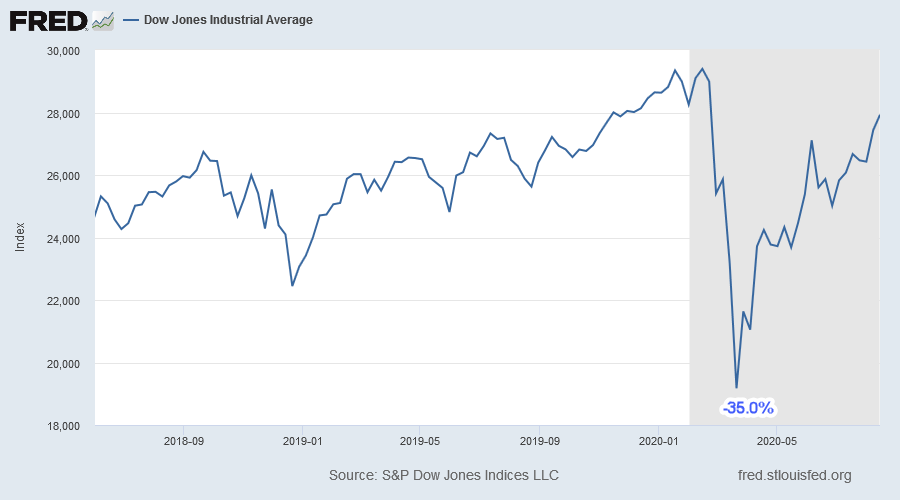
This item compares the 1957 asian flue pandemic to the COV 19 pandemic. There was no particular dispute over the science back then and quinine was readily available.
It remains plausible that COV 19 is a deliberate assault by enemy forces inconcert with an onging operatiom to maximize the reported numbers. All this needs to be proven otherwise as a matter of good practise.
The correct fix is to make quinine readily available for anyone having a cold and to end isolation programs and certyainly masks. Get back to normal.
This time is different
By Colin Twiggs
August 22, 2020
First, please read the Disclaimer.
I received a question from Pat:
"Colin, you remain cautious, so I would be interested in your view in why this time is different to the 1957/58 Pandemic...... Only difference I can see is they did not have internet and free money. Would be great to hear your views...."
The 1957/58 pandemic that Pat refers to was the H2N2 Influenza A virus (commonly referred to as the "Asian flu") which emerged in East Asia in February 1957 and triggered a global pandemic. The CDC estimate that the virus caused 1.1 million deaths worldwide, of which 116,000 were in the United States.
The virus reached the US in June 1957 and some of the first cases were reported among US Navy personnel at Newport Naval Station and new military recruits elsewhere. The first wave peaked in October and affected mainly children returning to school after summer break. The second wave, in January and February 1958, was more pronounced among elderly people and so was more fatal. (Wikipedia)The economy went into recession in August 1957, with the Dow Jones Industrial Average retreating 15%, but recovery was quick, with the recession ending April 1958 and the Dow reaching a new high by September.
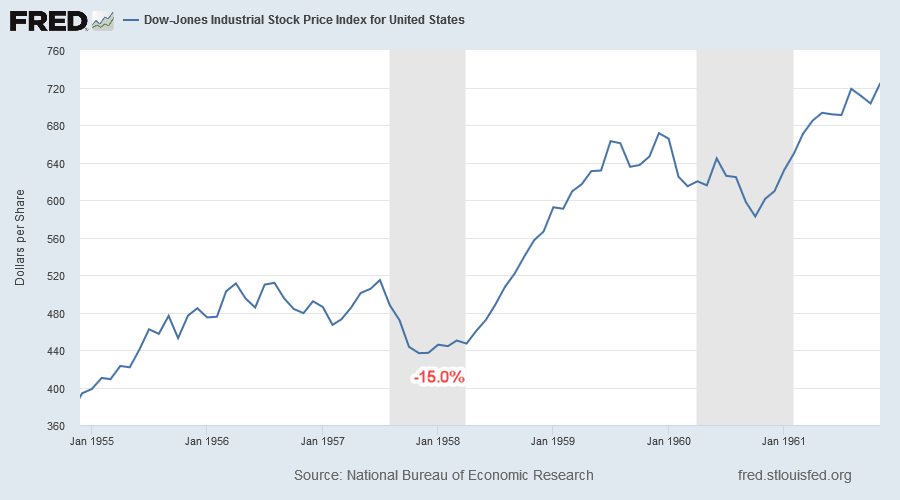
The Dow's 35% drop in March 2020 was far more severe but recovery, aided by massive QE from the Fed, is even sharper than 1957. But that is not the whole story.

Employment fell sharply in 1958, with non-farm payrolls contracting by 4.2%.

That is almost as bad as the 5.0% contraction in 2009 but nowhere near the -13.4% in 2020.
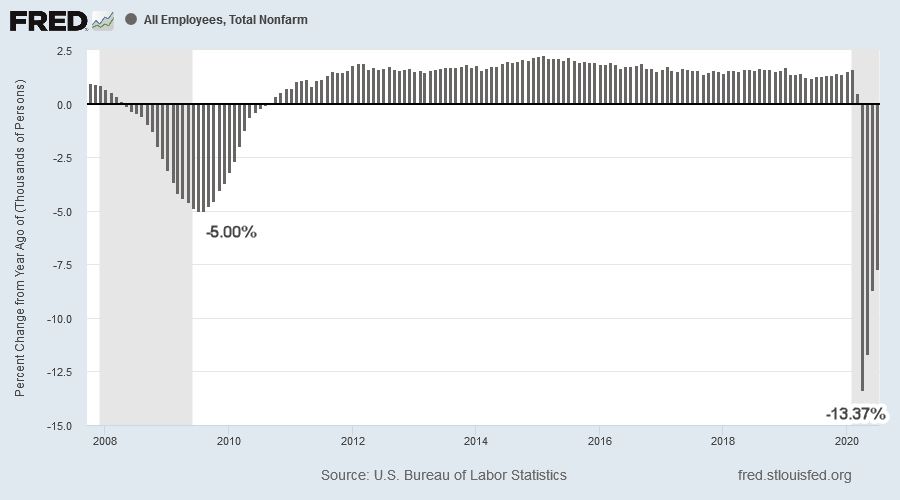
Real GDP fell 2.6% in 1958, compared to 3.9% in 2009, while the 2020 contraction is more than 3 times as bad at 9.54% — and likely to worsen before it recovers.
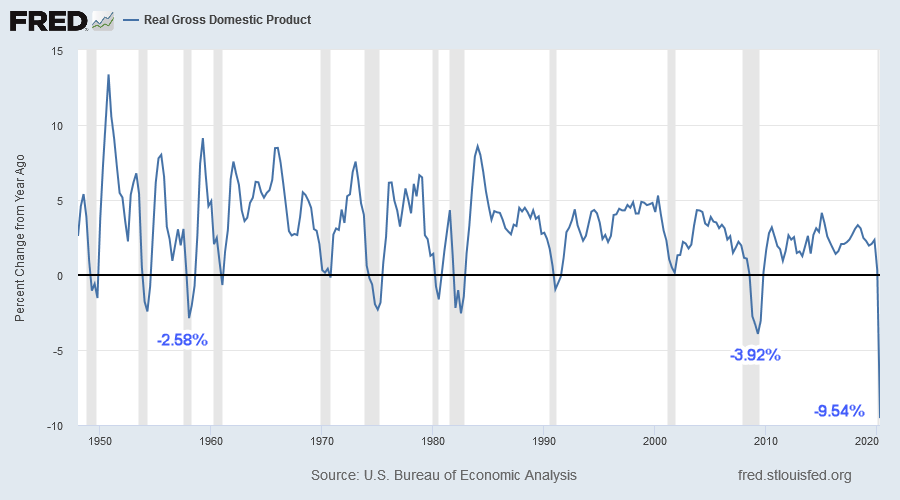
Government ran a deficit of 2.5% of GDP in 1958 to assist the recovery. That is small compared to the 26.9% deficit run during World War II and even the 9.8% deficit from 2009.
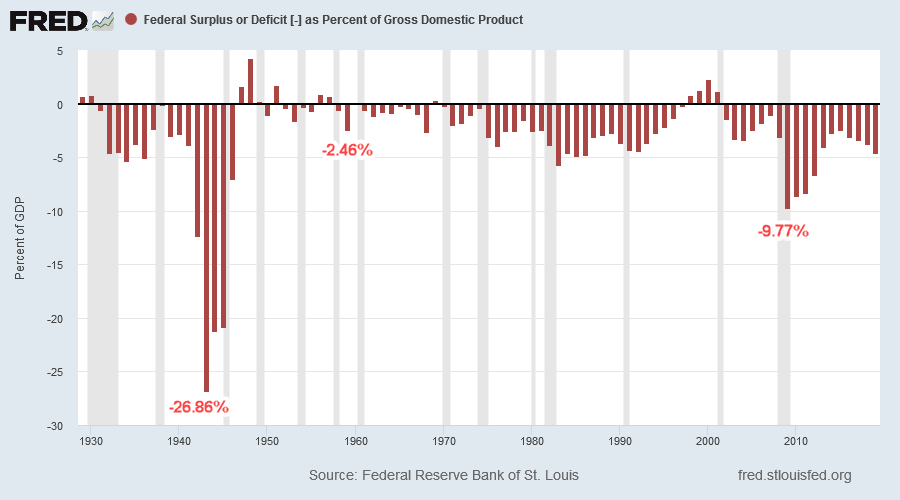
Sharp falls in employment and GDP forced Treasury to go all-in to rescue the economy. Severity of the contraction would have been far greater if left unattended.
Why COVID19 is different
In April 1957, three months after the initial outbreak in Asia, microbiologist Dr. Maurice Hilleman, chief of respiratory diseases at the Walter Reed Army Institute of Research, realized a pandemic was on its way to the United States. He obtained samples of the virus from a US Navy doctor in Japan and by May the Public Health Service had released virus cultures to vaccine manufacturers. A vaccine entered trials before the end of July and was available in limited quantities by October the same year.
Making a vaccine for a new flu strain is very different from making a vaccine for something completely new like COVID-19, the novel coronavirus that emerged in 2019. Doctors and scientists first developed viable flu vaccines in the 1940s, so they were not starting from scratch when they went to work on the 1957 flu vaccine.
....When the new flu strain hit the United States in September, just as Hilleman had predicted it would, the country was ready with a vaccine ....experts suggest it would have killed many more if not for the vaccine. (History Channel)
H2N2 compared to COVID19
Both the H2N2 and COVID19 viruses are spread in a similar manner — mainly by droplets transferred by coughing, sneezing or talking — and patients often become contagious before they show symptoms. Transmission rates are close: COVID19 has an R0 (a mathematical term that indicates how contagious an infectious disease is) of 2.0 compared to 1.7 for the Asian Flu. But mortality rates are far higher: 4.5% for COVID19 versus 0.6%. Higher complication rates with COVID19 also place far more load on medical facilities. A CDC China study classed 80.9% of COVID-19 cases as Mild, with the balance of 19.1% classed as Severe or Critical, compared to a complication rate of just 3.0% for the Asian Flu.
The Eisenhower government was also initially slow to respond to the threat in 1957 but by August had arranged $2.5 million in funding from Congress and about 40 million doses of vaccine were available by November.
Key differences that slowed the spread of the virus were:
Limited international travel between Asia and the US in the 1950s; and
Rapid introduction of a vaccine.
What is concerning is that, even with a vaccine, the H2N2 virus was still a global threat ten years later:
H2N2 influenza virus continued to transmit until 1968, when it transformed via antigenic shift into influenza A virus subtype H3N2, the cause of the 1968 influenza pandemic. (Wikipedia)
Why the economic impact is greater
Not only was the vaccine available within six months (June to November) in 1957, but the economy was in a far better position to deal with the threat.
Limited international travel meant that spread in the US was slower and there were no lockdowns.
Global trade was limited and largely focused on commodities.
There were few if any global supply chains.
Air travel, both domestic and international, was still in its infancy.
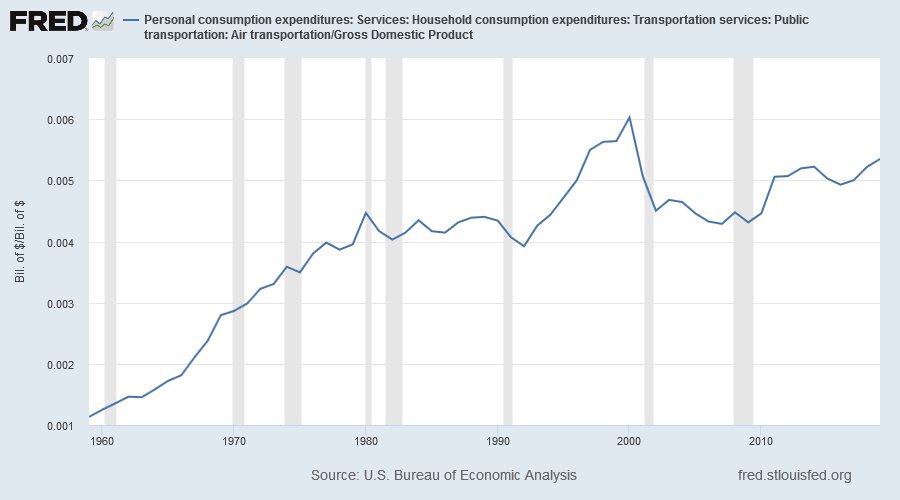
Food services & accommodation were more developed but not as vulnerable as in 2020.
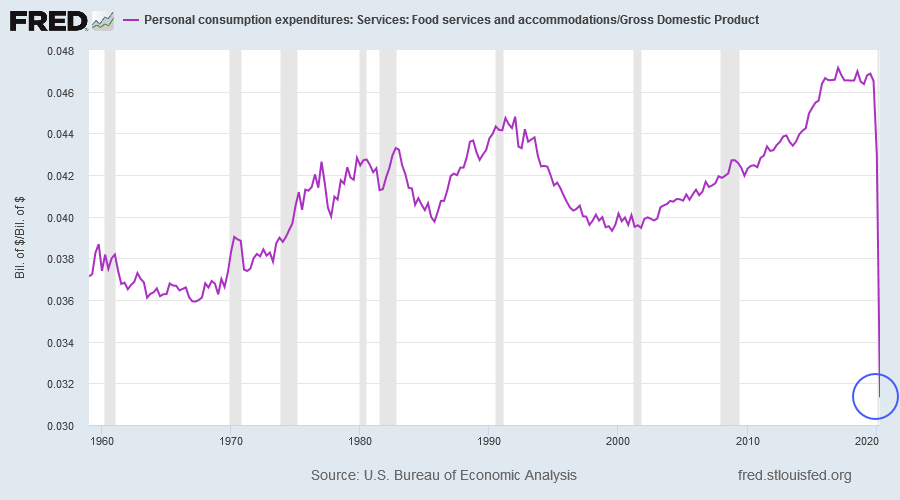
Key differences in 1957 were:
Limited international trade;
Few if any global supply chains;
Limited impact on air travel, food and accommodation; and
Fewer job losses, which enabled the economy to recover quicker.
The biggest difficulty the US faces in 2020 is the high level of unemployment (almost 1 in 5 workers are collecting unemployment insurance or CARES Act benefits) and the domino effect this will have on consumer spending, housing, banking and many other industries when the benefits dry up.
Conclusion
This time is different. We face a global pandemic depression rather than a recession.
Cryin' won't help you, prayin' won't do you no good
Now, cryin' won't help you, prayin' won't do you no good
When the levee breaks, mama you gotta move....
~ Led Zeppelin, When the Levee Breaks
(originally recorded after the 1927 Mississippi floods by Kansas Joe McCoy & Memphis Minnie)
Colin Twiggs is director of The Patient Investor Pty Ltd, an Authorised Representative (no. 1256439) of MoneySherpa Pty Limited which holds Australian Financial Services Licence No. 451289.
Everything contained in this web site, related newsletters, training videos and training courses (collectively referred to as the "Material") has been written for the purpose of teaching analysis, trading and investment techniques. The Material neither purports to be, nor is it intended to be, advice to trade or to invest in any financial instrument, or class of financial instruments, or to use any particular methods of trading or investing.
Advice in the Material is provided for the general information of readers and viewers (collectively referred to as "Readers") and does not have regard to any particular person's investment objectives, financial situation or needs. Accordingly, no Reader should act on the basis of any information in the Material without properly considering its applicability to their financial circumstances. If not properly qualified to do this for themselves, Readers should seek professional advice.
Investing and trading involves risk of loss. Past results are not necessarily indicative of future results.
The decision to invest or trade is for the Reader alone. We expressly disclaim all and any liability to any person, with respect of anything, and of the consequences of anything, done or omitted to be done by any such person in reliance upon the whole or any part of the Material.
Please read the Financial Services Guide.
No comments:
Post a Comment